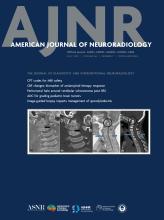Case of the Month
Section Editor: Nicholas Stence, MD
Children's Hospital Colorado, Aurora, CO
August 2023
Next Case of the Month Coming September 5...
CNS ALK-Positive Histiocytosis
- Background:
- Histiocytoses are disorders with abnormal development of macrophages, dendritic cells, or monocyte-differentiated cells in various tissues.
- Many different gene mutations have been identified in histiocytic disorders, the most frequent including mutations that involve MAPK signaling, leading to the use of specific MAPK pathway inhibitors (ie, BRAF or MEK inhibitors) for treatment.
- More recently, a subset of histiocytic neoplasms has been identified with alterations in other signaling pathways, including receptor tyrosine kinases such as ALK with KIF5B-ALK fusions.
- After the first description of systemic ALK-positive histiocytosis by Chan et al in 2008, subsequent case series have documented several types of disease involvement, including multisystem disease with liver and hematopoietic involvement, other multisystem disease, and single-system disease. In a large case series, 12 patients with single-system disease had CNS involvement.
- Key Diagnostic Features:
- CNS disease can present with multiple distinct, solid, enhancing intracranial nodules or masses, or with diffuse leptomeningeal disease, as in this case.
- Lesions are often T2 isointense to gray matter and mildly restrict diffusion.
- Differential Diagnoses:
- Differential considerations for this appearance include neoplasm, including diffuse leptomeningeal glioneuronal tumor (DLGNT) or metastatic disease from CNS neoplasms such as PNET or medulloblastoma. A widespread granulomatous infectious process (such as tuberculosis) could appear similar, depending on history.
- Treatment:
- Treatment historically has been with traditional chemotherapy, although a robust and durable response has been seen in patients treated with ALK inhibition.











